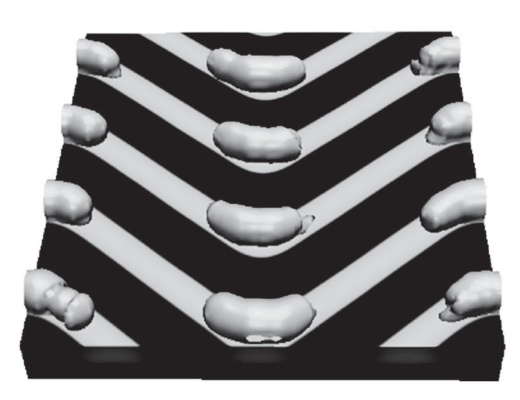Abstract
Self-assembly of block copolymers can be used to create nanoscale patterns for numerous applications that span from the fabrication of microelectronic devices to producing structured nanocomposites with enhanced properties. One ubiquitous challenge for controlling the distribution of nanoparticles in a block copolymer matrix is the strong interactions between the nanoparticles and any defects in the block copolymer order; nanoparticles are known to segregate to and stabilize defects and grain boundaries, but a quantitative analysis of this effect remains limited. Using 3-Dimensional field-theoretic simulations, this attraction is quantified by creating tilt grain boundaries of controlled size within ordered block copolymer nanocomposite films. For particles that are chemically identical to one of the copolymer blocks, the scaling of the particle attraction is proportional to the chain stretching at the grain boundary. Furthermore, the free energy of segregation is proportional to the volume of the particles, suggesting that a nanoparticle enables relaxation of a volume of material at the grain boundary that is proportional to the volume of the particle. At low particle concentrations, fluctuations play a large role in determining the final particle configuration, in contrast to homopolymer additives where fluctuation effects are relatively minor.
